How To Protect Your Carpet/Floor When You’re Painting
When I moved into my home in 2008 I decided one of the bedrooms was going to be my art studio. I was having carpets fitted throughout the house, and I spent a while thinking about whether I should carpet my new studio or not, or just leave the bare floor boards uncovered. In the end I opted for a combination of the two, and had my studio carpeted along with the rest of the house, but then purchased 2 sheets of 3mm x 1220mm x 2440mm ( 8 foot x 4 foot ) hardboard to lay on the carpet, as a sacrificial covering.
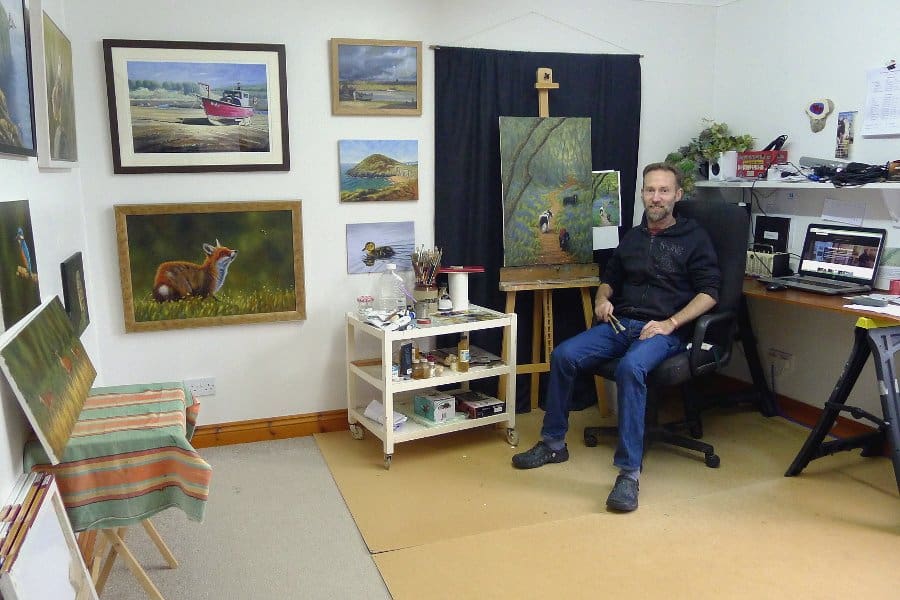
Because my floors underneath the carpeting are wooden, I was able to tack down the hardboard sheeting with carpet-tacks to stop anyone tripping over the corners and edges of this sheeting. There was no need to cover the entire studio floor with these hardboard sheets, I just used two sheets where I knew my easel would be and where I knew my chair would wear most. Two sheets is an area 8 by 8 feet, which is plenty of covering.
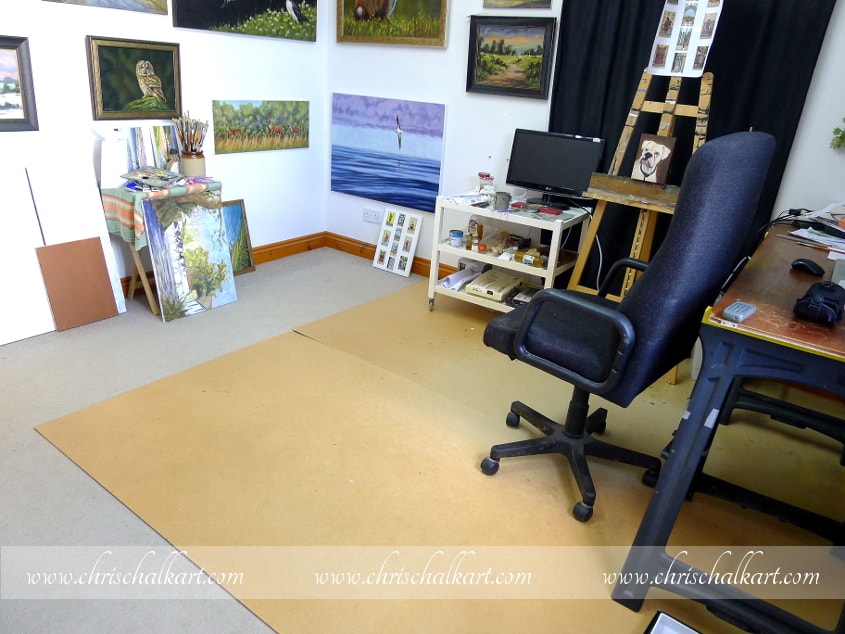
I have an artist friend who paints much more energetically than me, and she not only has covering on the floors, but has also put covering up the walls to a height of about 6 feet. This is a great idea if you’re a very free painter. You certainly don’t want to be painting with half a mind worrying about making a mess of your studio, floor, walls, ceiling, furniture ..e.t.c
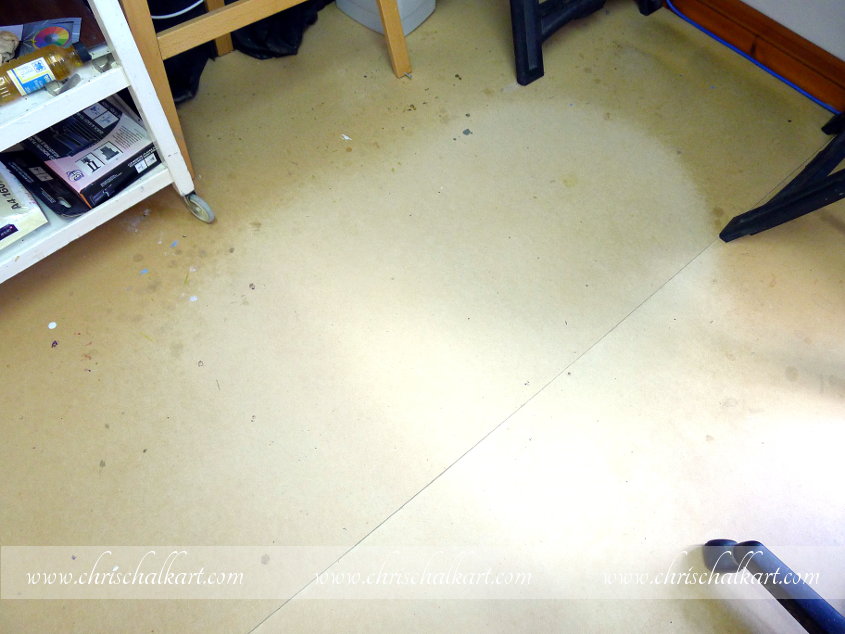
You can see the wear caused by the wheels on my chair over the years, also a fair bit of paint splatter that was saved from landing on the carpet beneath the boards.
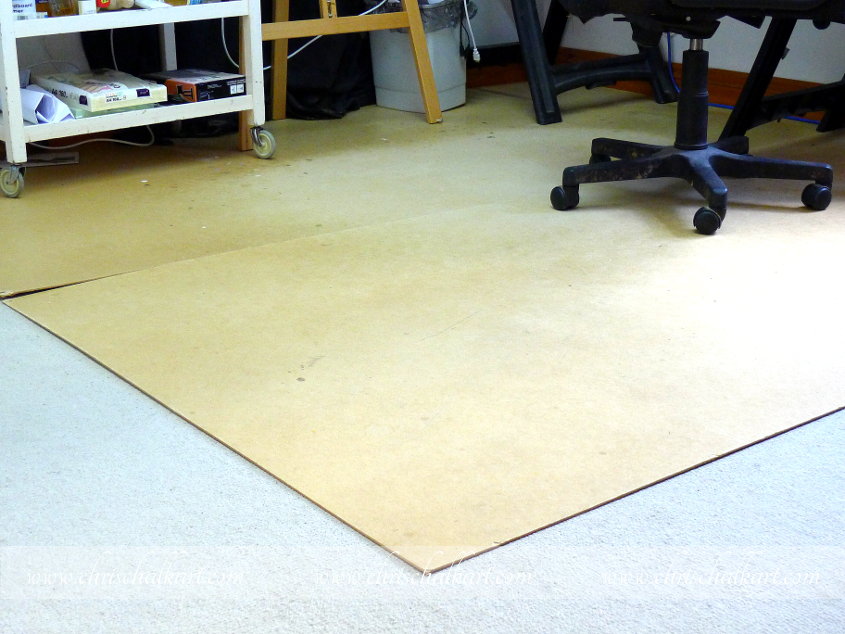
I’ve nailed/tacked the hardboard sheets down through the carpet and into the wooden flooring beneath, this keeps the hardboard sheets flush with the floor so they pose no trip hazard.
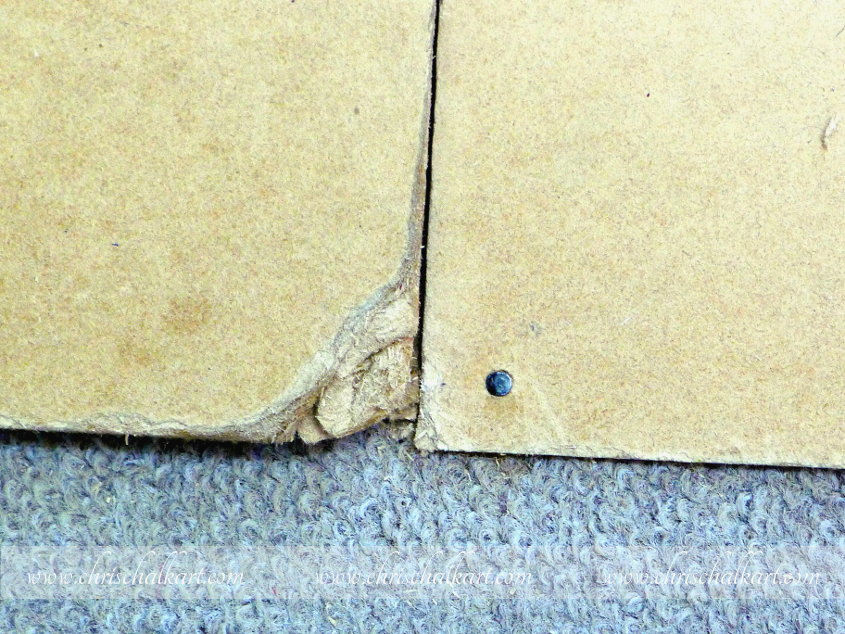
You can see where the carpet tack/nail has come loose in the damaged corner of one sheet here, and already the board has lifted a little, and become a trip hazard.
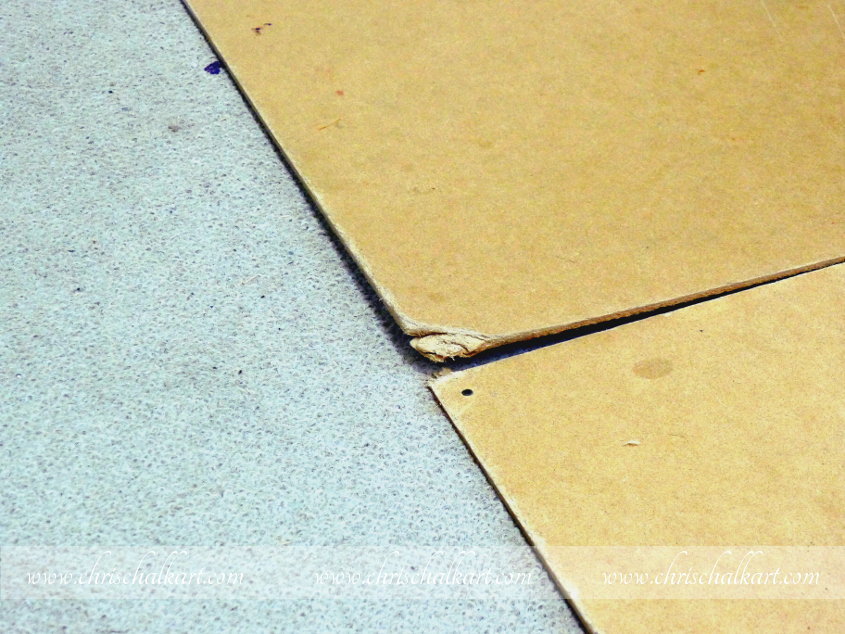
Hardboard is not the only material you can use to cover and protect your flooring from paint and damage, you can use thick paper and tape down the edges, also thick plastic sheeting taped down and also taped to the walls. You could also use MDF sheeting, which is also cheap and easy to cut.
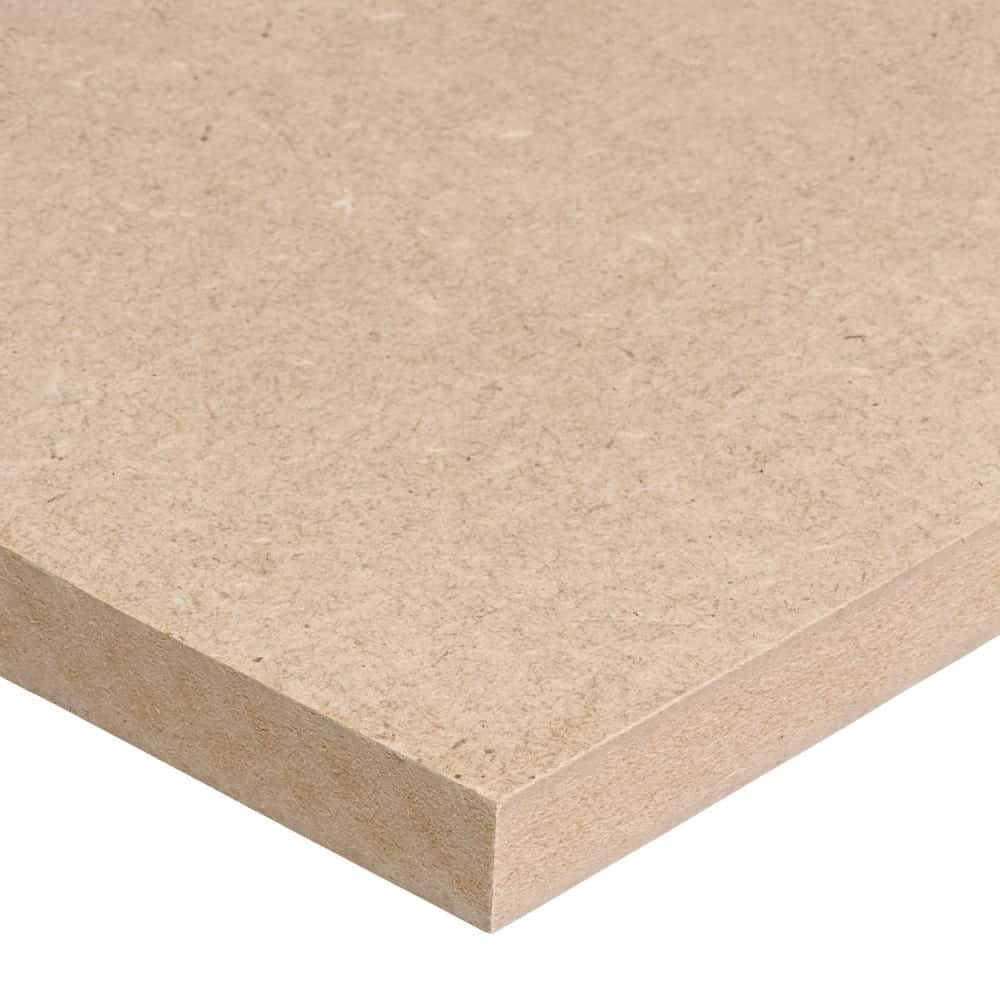
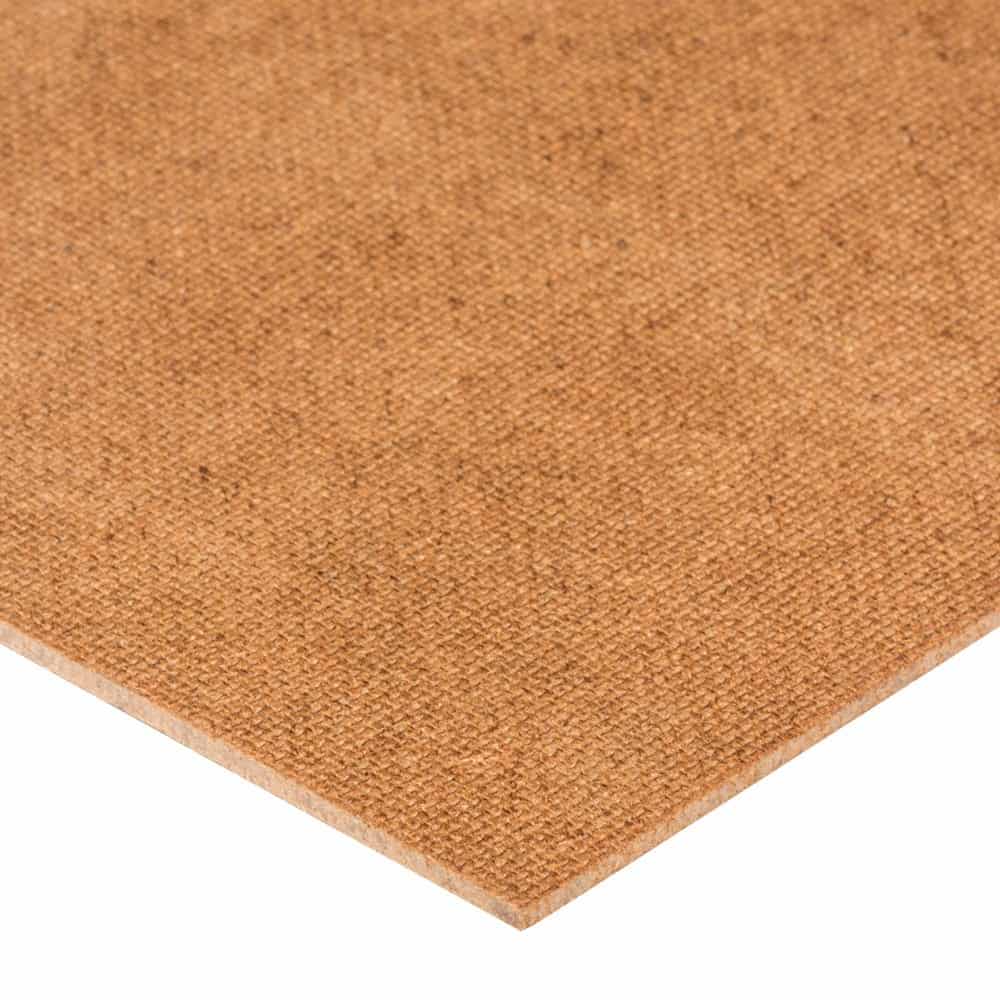
The added advantage of using a robust smooth floor covering, such as hardboard of MDF sheeting, is that your chair rolls beautifully and effortlessly around on it.
At the time of writing General Purpose Hardboard 3 x 1220 x 2440mm is widely available and only costs around £7 a sheet, it’s obtainable from all good DIY stores, such as:
https://www.travisperkins.co.uk
Best wishes
Chris